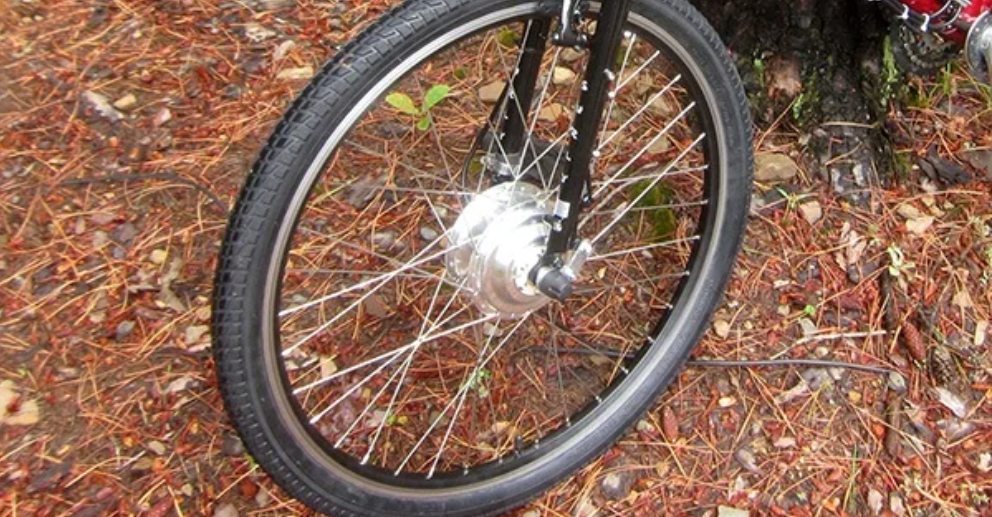
My First E-Bike Experience - Entry #3
Share
In my last post I wrote about my installation of the 350w 10ah conversion kit on my 30+ year old Diamondback Response Sportmountain bike. In this post I give you my first impression of the performance and what changes I had to make in the build.
The area where I live is in central Arkansas in the foothills of the Ozark mountains. Mountains is what they are called, but they are more like big forested hills, with deep canyons called "hollers" and flat plateaus or "hogbacks".
The area where I ride is a community of about 8000 and the elevation ranges from 461' to about 600'. I had given up trying to ride a bike here over the last eight years because it simply wasn't fun. I was hoping the new Dillinger E-Bike kit would change that.

First Ride . . . .
I started my first ride with the PAS set at assist level 3 and took off peddling down the street. Within about 2 seconds I felt the front hub motor kick in and began to assist me. I could tell this was a whole new experience. I continued up the street for about a mile climbing a slight grade. On my 21 speed bike I had it in gear 3-7 and it was easy peddling in PAS level 3. I switched to level 4 and my speed quickly increased to about 18mph without a lot of additional effort. I continued riding over some steep grades, some of which would have been a real workout on a traditional bike but where no problem for this 350 watt front hub motor. On the steepest grades I switched to level 5 assist and dropped my gear to 3-2 and could really feel the motor helping. On level stretches I easily reach 20-22mph with level 5 assist and gear 3-7.
I was very pleased with the performance and anticipated many enjoyable hours riding. Then I rolled up to a stop sign and felt a sudden lurch forward. I knew something had happened to the wheel.
Inexperienced decision and changes . . . .
I should have done a little more reading/research before installing the hub motor on the old bike. It had a RockShox aluminum suspension fork and after about 5 miles of riding the fork dropouts failed.
I was naive and did not know about the stress a hub motor places on the dropouts. I went to the forums on Endless-sphere.comto see what other E-bikers said about front fork failures and front hub motors. Needles to say, I found a lot of information, all of which said to never install a front hub motor on aluminum or magnesium dropouts without using torque arms or better yet,
install only on steel forks.

Lesson learned . . . .
After a lot of research on replacement forks I could not find any suspension forks that were not made of magnesium. I could have used a new suspension fork with the addition of two (2) torque arms, (as many people recommended), but I decided I wanted the extra piece of mind that a steel fork provided. I ordered a Surly Troll steel fork and installed it on my bike. Many
people say that you are "OK" with just the steel fork but I wanted a very strong and secure install so I also added a couple torque arms for worry free riding.
The fork failure was not in any way, a fault of the Dillinger hub motor. Any front hub motor that I would have installed would have resulted in an equal failure of the fork dropouts. Dillinger's only fault was that they should have recommended torque arms be installed if installing on anything other than steel forks.
They will probably be updating their web site to state this at some point.

Back to Riding . . . .
After installing the new steel fork and a couple torque arms I was back on the street and riding again. With the new improved setup, I have logged more than 225 miles!
I am very impressed with the performance of the 350w front hub motor. So far I've been riding in assist level 3 or 4 but on occasion I've clicked it up to level 5 to get up some steeper grades
At level 5, the digital readout indicates the motor in putting out a little over 500 watts when working hard. On level 4 it shows and output of 300 watts. Top speed on level terrain is about 22mph. On an average 10-12 mile ride the battery indicator is still showing 2 bars. Recharge time takes about 3-4 hours.
I am extremely happy with my Dillinger conversion kit! I think it is a great value and a great way to get into E-biking.
if you don't want to spend the money for a factory built electric bicycle or have a good old bike that you want to breathe new life into this is a good solution.
In my next post I will get into some more detailed riding performance with graphs of elevation changes verses speed and more. Stay tuned....
